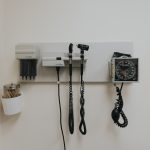Share
TPP Alberta news
Updates from Alberta’s prescription monitoring program
Move to a two-part form
As mentioned in January, TPP Alberta is moving to a two-part prescription form to improve processes and save significant operational costs. The prescribing and submission requirements remain unchanged.
The new two-part forms are now in use. Please use up your existing stock of three-part forms before re-ordering.
When using the new two-part form, the pharmacy will receive only one copy of the secure prescription. We recommend prescribers fax the prescription to the patient’s pharmacy of choice. (Please refer to the Prescribing: Administration Standard of Practice).
Pharmacies will continue to send a copy of the TPP Alberta prescription only for compounded medications, veterinary use, office use or when it is a Yukon prescription.
Keeping the TPP Alberta program name
In moving from a three-part to a two-part form, the program will keep its recognized “TPP Alberta” name. However, program administrators will no longer use the word “triplicate” for TPP Alberta.
Foquest (methylphenidate hydrochloride controlled release capsules)
Effective immediately, TPP Alberta is monitoring Foquest as a type 2 drug (instead of a type 1 drug). Therefore, a secure TPP Alberta prescription form is no longer required. This change is based on input from prescribers, experts and from post-marketing data.
Questions?
Contact TPPinfo@cpsa.ab.ca or call 1-800-561-3899 ext. 4939.
An update on Bill 21: An Act to Protect Patients
On April 1, 2019, Bill 21: An Act to Protect Patients takes effect for all regulated health professionals across Alberta. Bill 21 legislation mandates that any healthcare professional proven guilty of sexual abuse towards a patient will face permanent license revocation, while healthcare providers proven guilty of sexual misconduct towards a patient face mandatory suspension. Bill 21 also includes mandatory self-reporting, as well as reporting by registered members of other regulated health professionals’ discretions that are in violation of the bill. Visit the Alberta Health website for full definitions of what constitutes sexual abuse and misconduct.
The CPSA developed a standard of practice (SoP) for Bill 21 that clearly defines the parameters around a patient relationship and when-if ever-a consensual relationship is acceptable. Regulated members were asked to provide their feedback in late December, before the draft standard was sent to the Ministry of Health for review and approval. The College expects final approval from the Ministry on our standard of practice in late March. Once live, the Bill 21 SoP and supporting documents can be accessed on our website.
Please join us: CPSA & AHS will host a joint virtual town hall on March 28 at 6 p.m. for all AHS-privileged physicians, which you can learn more about here. The town hall will also be recorded and shared with all CPSA-registered members in Alberta.
Final versions of the standard of practice, advice to the profession and patient FAQs will be shared in late March. As physicians, it’s extremely important to familiarize yourself with these Bill 21 documents because of the severity of consequences. If you have any questions about these documents, please contact CPSA Standards of Practice Coordinator, Chantelle Dick, at Chantelle.Dick@cpsa.ab.ca
Notice to Edmonton And area physicians
AHS recommendations on former Domtar wood treatment site
The Government of Alberta recently announced that numerous areas of land at a former wood treatment site (Domtar) in north Edmonton have been verified as contaminated. Areas verified as contaminated have had exposure control measures in place since last spring.
An Alberta Health Services (AHS) and Alberta Health preliminary comparison analyzing rates of cancer, miscarriages and birth defects in surrounding areas showed no difference between rates in the area of the former Domtar site compared to other areas of the province, with the exception of three types of cancer. Among those who had lived in the area for 10 or more years, there were:
- 34 cases of breast cancer in women (16 to 31 cases would have been expected),
- 14 cases of endometrial cancer in women (three to nine cases would have been expected) and
- 22 cases of lung cancer in men (six to 14 cases would have been expected).
No differences in any childhood cancers compared to other parts of the province were found.
While this data shows correlation, not causation, further investigation is needed and will be conducted by Alberta Health in conjunction with provincial and national cancer and epidemiologic experts.
The College and AHS recognize that this update may be troubling for patients who presently reside, or have previously lived, in this area. As updates continue to be provided to residents in this area, AHS suggests physicians take the following actions with patients:
- Continue to encourage preventive health interventions, such as:
- Reducing tobacco use,
- Promoting physical activity to maintain a healthy weight,
- Reducing consumption of harmful alcohol use and
- Consuming a healthy diet, with an emphasis on plant sources.
- As a precautionary approach specific to early breast cancer detection, please consider the following early screening intervention for breast cancer:
- discuss the risks and benefits of screening mammography starting at the age of 40, for women who have resided in the immediate geographic area for more than ten years.
For more information and to view a map of the area, visit the Government of Alberta’s contaminant management website and www.ahs.ca/domtar.
Please contact AHS with any questions you may have.
A reminder from the Alberta Funeral Service Association
Medical Certificate of Death must be signed within 48 hours
The Alberta Funeral Service Association (AFSA) would like to gently remind physicians that the Medical Certificate of Death for deceased patients must be signed within 48 hours of the time of death. Recently, AFSA members have noticed an increase in the number of Medical Certificates of Death signed after the allotted 48-hour window.
Why is this important?
This signature is time sensitive, as families are unable to go ahead with burial or cremation until the Medical Certificate of Death is signed and the death registered in accordance with provincial law.
As stated in Part 5, Section 33(2) of the Vital Statistics Act, physicians are responsible for signing the Medical Certificate of the Death when:
“(a) a physician
(i) has attended the deceased person in relation to the deceased’s final illness at least once during the 14 days immediately preceding the death,
(ii) is able to certify the medical cause of death with reasonable accuracy, and
(iii) has no reason to believe that the deceased died under circumstances that require the notification of a medical examiner under the Fatality Inquiries Act,
(b) the death was natural or occurred during an operative procedure or within 10 days after an operative procedure and a physician
(i) is able to certify the medical cause of death with reasonable accuracy, and
(ii) is authorized to complete and sign the medical certificate of death under section 19(7) of the Fatality Inquiries Act,
or
(c) a medical examiner conducts an investigation into the death pursuant to the Fatality Inquiries Act,
the physician or the medical examiner, as the case may be, shall within 48 hours of the death complete, sign and deliver to the Registrar a medical certificate of death in the form required by the Registrar stating the cause of death according to the International Classification.”
As physicians, it is our duty to follow this legislation. If you will be unavailable to sign a Medical Certificate of Death due to time away from work, please consider whether the colleague covering your practice may also be able to provide a signature in the case of a patient’s death.
The CPSA and the AFSA appreciate your timely cooperation.
Questions? Please contact Shawn Knight, CPSA Chief of Staff, at Shawn.Knight@cpsa.ab.ca.
An epidemic of unanswered messages
One physician’s quest to see phone calls returned
Dear Colleagues,
If you’ve been in frontline clinical practice for as long as I have (37+ years), I’m sure this has happened to you: you phone one of your medical colleagues to discuss the care of a mutual patient and leave a message with one of their administrative personnel, requesting a response within a reasonable period of time. Continuing on with one’s busy practice, you then wait for a return phone call, which sometimes does not come. After a few days pass with no response, you make another attempt to connect with your colleague-perhaps through another means, like email.
The challenge of reaching our colleagues seems to be a recent development. I’m unsure if this shift is representative of physician overload or burnout, a lack of collegiality or something entirely different; but what I do know is that it can be frustrating and I suspect I’m not alone.
I would like to challenge all of us to review and identify areas of improvement in our own practices for returning phone messages from colleagues, especially when concerning patient care. If you are out of the office, empower your administrative staff to share a private contact number or to advise callers if there will be a delay in response time. Conversely, when leaving messages, let’s help our colleagues by providing multiple methods of contact, including email, and specifying our timeline or expectation for a return phone call.
Let’s work together to ensure we’re communicating and collaboratively providing the best care possible for our patients.
Yours sincerely,
Dr. Bill Taylor
Discipline report
Physician Found Guilty of Unprofessional Conduct
In a joint submission by Dr. Subrata Chakravarty and the College’s Complaints Director, Dr. Chakravarty admitted to unprofessional misconduct and received a six-month suspension of his practice permit.
Background
Dr. Chakravarty, a Westlock anesthesiologist, conducted a teaching session at a hospital in 2016. Later that evening, he invited the student interns and other hospital staff back to his house to socialize. Two interns decided to stay overnight in spare bedrooms as they had been consuming alcohol. Dr. Chakravarty proceeded to inappropriately touch one of the students and request that she sleep in a bed with him.
The student later disclosed what occurred to officials at the University of Alberta’s Faculty of Medicine & Dentistry, who subsequently filed a complaint with the College.
Order of the Hearing Tribunal
Dr. Chakravarty admitted to the allegations and accepted responsibility for his actions, which was considered by the Hearing Tribunal as they ordered the following sanctions:
- A six-month suspension of his practice permit, beginning Feb. 2, 2019.
- The enrolment, at his own cost, into a new Continuing Care Agreement with the College, for a period of at least five years (as a result of an earlier complaint, Dr. Chakravarty willingly enrolled in a Physician Health Monitoring Agreement with the College in 2014 that was still ongoing at the time of this transgression).
- A restriction on his practice permit that will prohibit Dr. Chakravarty from having any oversight or involvement with learners in any capacity, until he has demonstrated to the satisfaction of the College’s Complaints Director that he is safe to be trusted in the role of instructor.
- Payment of 75 per cent of the costs associated with the investigation and hearing (totalling $28,096.56), in addition to the full cost of the Comprehensive Occupational Assessment Program (COAP) report that was mandated as part of the CPSA’s investigation.
Commentary
The Hearing Tribunal noted the severity of Dr. Chakravarty’s misconduct, given the significant power imbalance in a physician-learner relationship, which is recognized in the CPSA’s Standard of Practice on Boundary Violations. Section 6 addresses Physician-Learner Relationships:
“A regulated member must not:
-
-
- sexualize a teacher-learner relationship by making sexual comments or gestures toward a learner;
- enter into a close personal or sexual relationship with a learner while directly or indirectly responsible for mentoring, teaching, supervising or evaluating that learner; or
- enter into any relationship with a learner that could present a risk of conflict of interest or coercion while directly or indirectly responsible for mentoring, teaching and/or evaluating that learner.”
-
A six-month suspension of a physician’s practice permit is a significant sanction and in this case, emphasizes that attempting to sexualize a physician-learner relationship is an abuse of power and a violation of the trust.
























Comments for this post are now closed. If you would like to share your feedback on this topic, please email support@cpsa.ca.